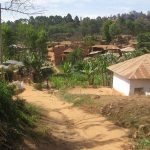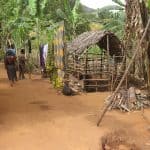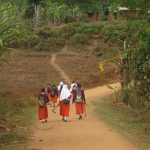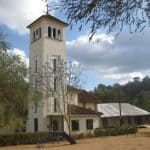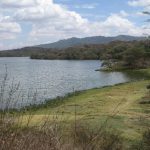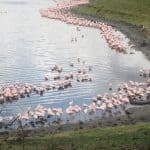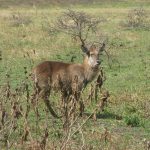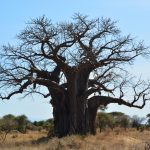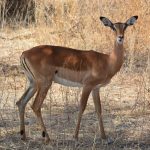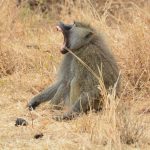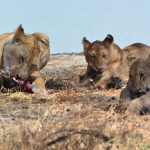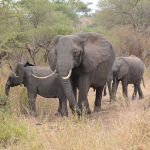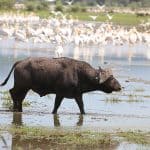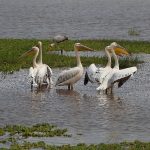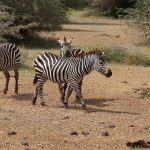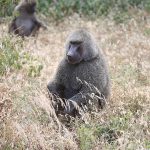Rwanda – National Parks
Rwanda - National Parks
Volcanoes National Park
“Gorillas in the Fog”, a film that many may know and which has made the Volcano National Park, located in the extreme northwest, world-famous through the research work of Dian Fossey. Since then, the last mountain gorillas are the main reason for visiting this national park. They live in the often steep terrain of the extinct volcanic landscape with mountains of about 4500 m height. The national park allows gorilla tracking, whereby the approx. 10 habituated gorilla families can be visited and observed with special permits. Besides the gorillas, Golden Monkeys live here, which can also be visited during tracking. Powerful hiking enthusiasts have the possibility to trek to the peaks of Bisoko, Gahinga, Muhabara, Gahinga and Sabinyo.
The landscape is characterized by tropical, lichen-covered mountain cloud forest and dense bamboo forest as well as the beautiful Lobelias and Senecias. From about 4000 m the alpine zone begins in the tree heath and other alpine plants thrive.
The park is a dissected part of the Albert National Park, which was founded in 1925 and was positioned across the borders of Rwanda and the Democratic Republic.
The best time to visit is the dry season from June to September and mid-December to mid-February. Then the trekking paths are less slippery than in the rainy season (end of February to May and October to mid-December) and the climate is more pleasant. Generally, the climate is relatively cool due to the altitude.
Akagera National Park
The national parks in the south are still little traveled. Among them is the largest national park in Tanzania, the Ruaha National Park, with an area of about 20,226 km². Lifeline is the Ruaha River, which meanders through the park and its seasonal tributaries. The park is located in the southwest of Tanzania, about 130 km west of Iringa and is surrounded by other protected areas. The edge of the Great African Rift Valley runs through part of the park. Lovely landscapes with gigantic baobab trees, anab trees and acacias make this park a special beauty and are home to over 1,400 plant species.
Ruaha is known for its high number of larger kudus as well as its large elephant population. Ruaha is also one of the only two parks that is home to both sable and equine antelopes. They like to spend time at the riverbed together with many other animals like hippos, crocodiles, buffalos and antelopes. Ornithologists find a true paradise for birds here. Hornbills, kingfishers, nectar birds, white storks and many more are at home here. In addition to numerous lions, leopards, cheetahs, hyenas, large and small kudus, zebras and the rare African wild dog live here.
Nyungwe Forest National Park
Northwest of the Selous Game Reserve is the still little known and travelled Mikumi National Park with about 3200 km² the fourth largest national park in Tanzania. The park is embedded between the Uluguru Mountains in the north and the Udzungwa Mountains in the south. In the south it borders directly on the Selous Game Reserve. Due to this connection the animals commute on this natural corridor. The national park is home to a great variety of animals such as large herds of elephants, numerous lions, leopards, spotted hyenas, buffalos, giraffes, zebras, many large antelope species such as kudu and sable antelope as well as the largest, the eland, crocodiles, hippos and last but not least the rare African wild dogs.
Lake Kivu
After a successful and maybe a little bit exhausting jungle trekking you can now relax in a very idyllic and relaxing atmosphere at the scenic Lake Kivu. The tropical beaches and breathtaking mountain scenery are ideal to enjoy and relax. Despite an altitude of about 1500 m, the water temperature of the approx. 2730 km² large Lake Kivu is about 23 – 27°C all year round and therefore ideal for swimming, but also for activities like kayaking, canoeing or other boat trips.
Kigali
Kigali ist mit ca. 900.000 Einwohner die größte Stadt und gleichzeitig Hauptstadt Ruandas. Sie liegt im Herzen des Landes. Die vielen Stadtgebiete erstrecken sich über mehrere Hügel und sind auch wegen ihrem auffällig grünen Erscheinungsbild hübsch anzusehen. Kigali verfügt über ein reges Nachtleben und bietet viele Restaurants und Bars. Das Kigali Genocide Memorial erinnert und klärt seine Besucher über den Völkermord, der hier zwischen den Völkern der Hutu und Tutsis 1994 stattfand auf. Ein Besuch auf einem bunten, traditionellen Markt rundet den Besuch von Kigali ab.

